What Is The Definition of Customer Loyalty?
There are many ways to define customer loyalty.
First and foremost, customer loyalty occurs when an individual consistently engages with a brand through transactions or purchases of specific products.
However, loyalty can take many different shapes and forms.
Some argue that customer loyalty is demonstrated by customers consistently choosing to purchase from specific brands. For instance, they may consistently buy groceries from one store, even if it is not the most convenient or cheapest option available.
OOthers argue that loyalty isn't solely based on purchases, but can also be demonstrated through actions such as social advocacy. For example, a customer might only purchase one Toyota in their lifetime, but they could passionately advocate for the quality of Toyota vehicles to their friends.
Each business has the flexibility to determine their own definition of loyalty, whether it be based on transaction size, frequency, fidelity, evangelism, or dedicated engagement.
Ultimately, it comes down to this: when loyal customers are in need of a product or service you provide, they will choose to give you the first opportunity to earn their business.
THE FUNDAMENTAL ELEMENTS OF CUSTOMER LOYALTY
We’ve long stated that there isn’t a magic bullet to customer loyalty. That said, it can be created in an instant.
At a strategic level, there are four key factors that contribute to customer loyalty. While each factor plays a part in encouraging repeat business, it's important to note that all four may not be necessary to cultivate true loyalty. For instance, some customers may be drawn back simply by competitive pricing, regardless of the product's quality.
But if you want to earn customer loyalty, it’s wise to consider these four overarching elements:
EXPECTATIONS
Understanding the true value customers receive from your product or service is crucial. This encompasses your marketing strategies and pricing. Are customers getting what they expect and need from your offerings?
To spur a loyalty-earning moment, exceed their expectations.
Also related this point is defining your audience and pursuing your ideal customer.
SERVICE
This comprises the individuals within the brand, including dedicated employees (whose contribution to customer loyalty is often overlooked) and a committed customer service team. This is where customers often derive the greatest value from their purchase.
Great service comes from organizations with a customer focus. A customer focus results in better products as well as better responsiveness to needs.
Even if the core product is great, poor service can jeopardize customer loyalty faster than other elements.
View each interaction as an opportunity to nurture customer loyalty. Understand that frustrated customers are seeking resolution, so prioritize addressing their concerns promptly. Additionally, actively seeking feedback from customers can pinpoint areas for improvement and contribute to overall organizational growth.
ENGAGEMENT
No matter how great you are, sometimes people need a little reminder of what you’ve done for them. Customer engagement is all about creating an ongoing relationship between customers and brand.
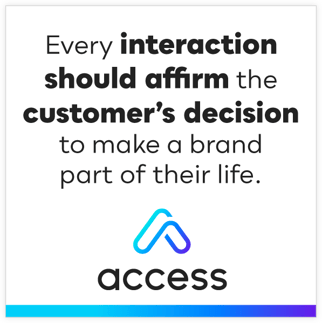 Engagement happens through regular communications (social media, email newsletters), customer incentives, and loyalty programs. A recent addition is online communities, which allow customers to connect with each other).
Engagement happens through regular communications (social media, email newsletters), customer incentives, and loyalty programs. A recent addition is online communities, which allow customers to connect with each other).
Engagement is especially important for businesses that don’t have regular transaction opportunities. Membership organizations, for example, must have strong member benefits that can express regular value. That ongoing engagement pays off when the time arrives for the member to pay annual dues.
It goes without saying that each moment of engagement is also a loyalty-earning moment. Every time someone opens an app, reads a brand Tweet, or sees a newsletter in their inbox is a chance to solidify or deepen the relationship.
VALUES
Recent studies suggest that emotional engagement is overtaking rational engagement, indicating that customers now evaluate brands based on how well they align with their own values.
Related to expectations, values encompass how well a brand aligns with the customer's identity. Customers tend to gravitate towards businesses that mirror their personal values, like sustainability or community engagement.
Carl’s Jr. offers indulgent, calorie-rich meals endorsed by supermodels, in contrast to the health-conscious organic trend. On the other hand, Trader Joe’s has established itself as a go-to for budget-friendly organic options. Both brands excel by aligning with the values and preferences of their customer base.
Nike attracts active individuals looking to push their limits, while Dunkin' Donuts offers a simple and comforting selection of coffee and pastries. REI closes stores on Black Friday and encourages their people to be with family and get outside. These are companies shaped around their customers’ values.
When a brand meets its customers' values, every interaction becomes a loyalty-earning moment.
WHY CUSTOMER LOYALTY IS IMPORTANT
Stated simply, loyal customers spend more, more often. Earning loyalty with just 5% of customers can lead to an increased average profit per customer of between 25% and 100%. BIA/Kelsey research shows that repeat customers spend 67% more than a new ones.
There are a lot more stats that back this up (and have have 500+ of them listed at our loyalty stats collection page). But you get the point.
It’s simply more profitable to retain a current customer than to chase a new one.
At present, over three-quarters of the population do not identify as loyal to any specific brand. Companies that prioritize building customer loyalty gain a competitive edge. While many businesses focus on acquiring new customers, establishing customer loyalty can set you apart in the marketplace.
But it's not just about the money. Loyal customers also exhibit other key traits, such as:
- Passion for providing feedback
- Sharing good experiences with friends and family
- Understanding and forgiveness when mistakes are made.
- More receptive to marketing and communications
- Thrilled to explore new products and services
- More inclined to accept price adjustments and modifications in services
GO FORTH AND EARN CUSTOMER LOYALTY
While it’s cheaper than new customer acquisition, earning customer loyalty is not easier. Acquisition can be hacked or bought, with some nice short-term gains resulting. Loyalty requires a focus on the relationship, with an organizational commitment to meeting needs.
Even with such a focus, customer loyalty can be lost just as swiftly as it is won. All it takes is one bad service experience or a change in a product’s composition. Some customers will walk away just for the sake of trying something new.
It’s best to approach earning customer loyalty on a day-to-day basis. Always add value, whether through promotions, customer appreciation gifts, communications, events, or any other number of tactics.
They may not stay forever, but the longer you can keep a customer the more profitable they become. The more loyal you can keep them, the more of the customer lifetime value you get to realize.
Customer loyalty is your way to realize countless sales and referrals. You don’t have to be drastic and stop all new business development. Even a small commitment to building better customer relationships will show a positive return.
Topics: customer loyalty
Written by: Gary Toyn
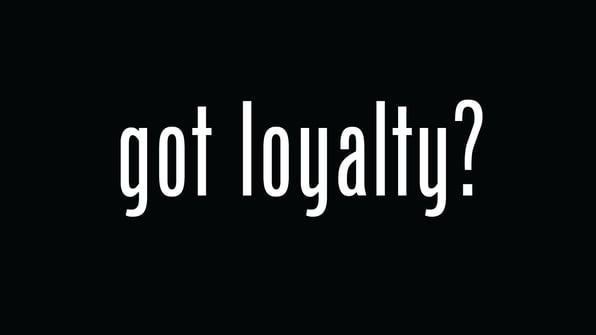



.jpeg)




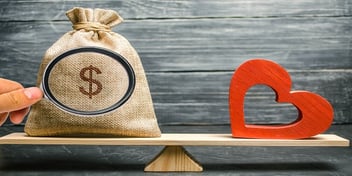
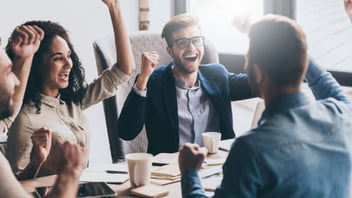
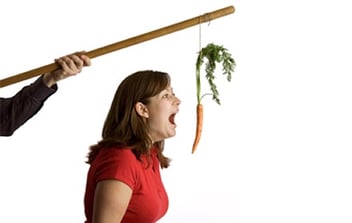
Share your Comment.